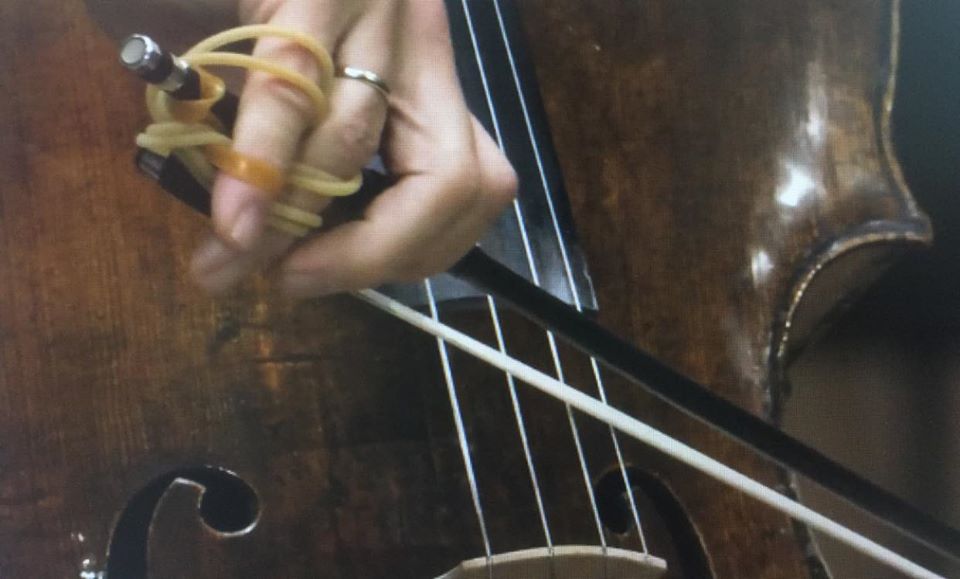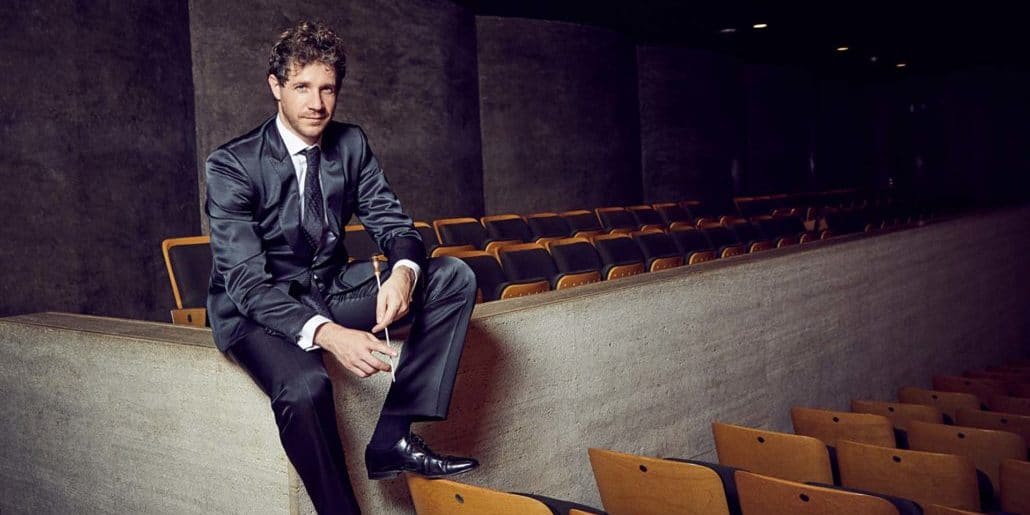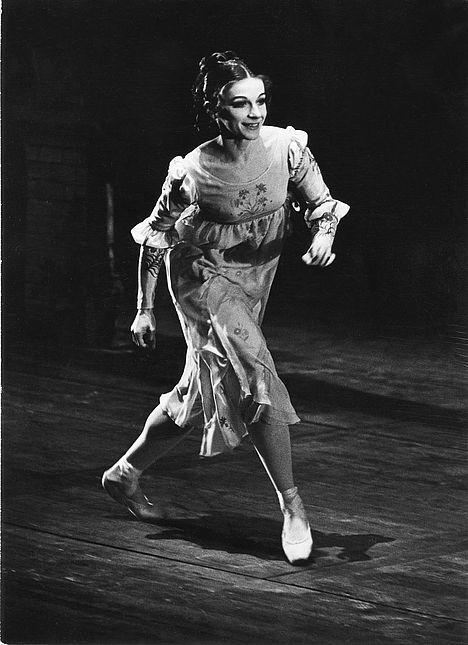Do you wear rubber bands?
mainHot topic on a cello chatsite:

While watching a Berliner Philharmoniker performance, I saw this on the cellist fingers. Anybody else does this?

Hot topic on a cello chatsite:

While watching a Berliner Philharmoniker performance, I saw this on the cellist fingers. Anybody else does this?
A social media activist has circulated a video…

The orchestra of Spain’s poorest region has just…

The Vienna State Opera has posted a death…

The Bavarian Radio Symphony Orchestra have uploaded one…

Session expired
Please log in again. The login page will open in a new tab. After logging in you can close it and return to this page.
Speaking of weird practices by top musicians, here’s the principal flute of Chicago (now of Berlin), who played with a piece of paper/cloth(?) stuck to his flute (knowing full well the camera would zoom in on him!)
See here https://youtu.be/rOjHhS5MtvA?t=618
I asked a flute friend and she was like, it’s a convenient way to mark how far to pull out the head joint to keep the flute in tune.
Is that really A Thing?
I mark that spot on my flute’s headjoint with a Sharpie. that is the sweet spot where the instrument plays best in tune.
I also mark where the footjoint is aligned with the main tube.
Mary, that appears to be a piece of paper he’s using to fit an unfitted headjoint to his flute. He is likely either trying a new headjoint or using a headjoint that is fitted to a different flute. Since the unfitted headjoint is smaller than the flute, you need something to fill up the space. One can do that much more cleanly by wrapping clear tape around the headjoint, but it’s certainly quicker to use a piece of paper like he’s doing.
It’s not uncommon to mark a headjoint or foot joint position especially as a student flutist / beginner, but that’s Matheiu Dufour, who is now co-principal in Berlin and a virtuosic player. I highly doubt he needs a crutch like that. Any player worth his/her salt generally knows the sweet spot by sight, and freely moves the headjoint to match the ensemble, his/her colleagues and the relative temperature of the instrument and adjusts constantly while playing. There is no absolute spot where you will always blow a perfect A=440 due to the nature of the materials and environment – as a flute gets warmer it goes sharper, colder it goes flatter and pitch changes constantly as a result of hall/environmental temperature and while playing. Even if Dufour were marking the headjoint position, it would be very subtle such as with a tiny clear piece of tape.
To me it looks like his headjoint was loose and the paper is jammed in there to keep it from slipping. That is not uncommon when trying new headjoints, and every make of flute and headjoint has a slightly different radius so they don’t always fit snugly when you mix/match. Silver flutes also come in different wall gauges (or thicknesses) and some prefer a thicker or “heavy wall” flute as they believe it has a darker and more powerful sound.
Gold flutes are generally a standard thickness and they all have a narrower gauge than even the thinnest gauge silver flutes, therefore gold headjoints are always loose when put into a silver body no matter how thin the silver wall gauge. Tape is commonly placed around the headjoint barrel where it inserts so it fits snugly in the sleeve. Some gold headjoints are so loose in a silver body that if you grab the flute by the headjoint, the body will slide off and crash straight to the floor.
My hunch in this video is that something was going on with Dufour – if his headjoint was a mix/match and loose, he’d have it taped professionally in a way that it was inside the barrel and no one could see it. My guess is that he had some sort of mechanical issue and it was a last minute workaround. I’ve never seen a video of him playing with paper hanging out of his head/body joint anywhere else.
To me it looks like the paper is actually stuck into the body of the flute. It might be that the head joint is a bit loose fitting for the body, perhaps he is trying it out and hasn’t had it sized properly to fit, so the paper fills in the difference so it doesn’t swivel around. Flutists quite often try out and switch head joints, it is gold and his flute appears to be silver.
The piece of paper acts like a shim between the top piece (the head joint) and the body, for a tight fit between the pieces. Its very common to use something like this if you are trying out new equipment, or if you don’t want to adjust one or another permanently. Oh yeah the flutist is remarkable, so all power to him for doing it on camera!
Nice, but what is the purpose of It after all? Can anyone explain?
It’s Ludwig Quandt, Solo cellist of the Berlin Phil. I think he uses the rubber, because of an injury of his right hand.
You can watch a portrait of him online at the Digital concert hall.
https://www.digitalconcerthall.com/de/film/350#watch
Because of woodchopping, I believe I read somewhere
Why do you need an injury? I noticed Ludwig Quant some years ago — and thought it was a brilliant way to hold the bow well. I´m a nicht-profi cellist and use a rubber band as Ludwig Quant does. I´m delighted with the results.
We don’t know if this person jammed their finger into a door, has some awful nerve issue or a myriad of speculative physical problems that are absolutely none of anyone’s business. Violinists and violists do it all the all the time by way of holding instruments with shoulder rests.Some string players wrap the end of the stick with an extra layer of latex tubing to improve grip. As long as it’s not a disturbance to the art being performed, who cares.
Can’t say for sure but given the strange shape of the ring finger, it looks just like the problem that happened to a colleague of mine, focal dystonia. Except he tapes his ring finger to the frog instead of using rubber bands. For him it is just an insurance that the finger remains on the frog and keeps the balance and doesn’t randomly lift off. Wonder if anyone can give more insight why this particular player does it.
In my village it’s a no-no to film and photograph during performances.
That’s nice, but this is from a video made by the orchestra’s own media group.
As someone else has already said below, it is to do with an injury to his right hand. Very interesting way of combating it.
I can confirm its Ludwig Quandt from Berlin Phil and he uses these because of a medical condition. Probably he would prefer if we noticed his musical qualities. I heard him perform in chamber music this year, admirably, with total technical mastery, superb intelligence and high sensitivity.
It would be nice if he himself announced publicly what the matter is because he can’t suppose nobody has noticed the thing.
On the other hand, it is great that he is able to keep his high level of playing. I wish him many more years of the delight playing in the Berliner Philharmoniker.
The BPO/ChicagoSO principle flutist is Mathieu Dufour, who has no need of anything extraneous to draw attention as he has musicianship and personal charm in abundance for that. In countless CSO and chamber concerts by Dufour I’ve never noticed such a cloth.
ALFRED BRENDEL played with some tips of his fingers in rubber gloves….that was in the 1970s…I don’t know why!!!
I believe Brendel (one of the greatest pianists of his time) suffered from a brittle fingernail condition and regularly played with sticking plaster on his fingertips.
All this speculation about rubber bands is a bit of a stretch.
I can think of two reasons: trying to correct a habit, or (more likely) dealing with a physical problem with his pinkie finger by binding it to his ring finger.
This could be just good ole neuroticism…as a double-bassist, I was (unreasonably) terrified of dropping my bow…I never did, but I would have certainly paid good money to have some similar contraption sent to me at once. Sort of reminds me of Tchaik’s unreasonable fear of head-falling-off whist conducting…